The holy city of Prayagraj is all set in preparation for the next Kumbh Mela. The Kumbh Mela is a prominent religious festival for the followers of Hinduism, attended by millions of devotees from around the world. It is held at one of the four holy pilgrimage destinations of Haridwar, Nashik, Prayagraj (Allahabad) and Ujjain, every 12 years by rotation. The next Kumbh Mela is set to happen in 2025 in Prayagraj, Uttar Pradesh. The dates for the Kumbh Mela are determined according to the Vikram Samvat calendar and will commence on Paush-Poornima on January 13, 2025 and conclude with Maha Shivratri on February 26, 2025. The Shahi Snan will take place on January 14, 29 and February 3 on the occasion of Makar Sankranti, Mauni Amavasya, and Basant Panchami, respectively.
Prayagraj Kumbh Mela
Bathing Dates – 2025
The dates for the Kumbh Mela 2025 in Prayagraj have been announced and will be attended by millions of pilgrims and devotees from India, as well as abroad. It will be a momentous occasion and will be marked by observations of various rituals, traditions and ceremonies, including mass feeding, religious discussions and devotional singing. Exchange of religious knowledge and scriptures also takes place, while laymen seek blessings of the saints and sadhus. The size and scale of the event has led it to be included as a UNESCO Intangible Cultural Heritage and is considered to be the largest peaceful congregation of pilgrims on earth.
Tourist Attractions to See
During Prayagraj Kumbh Mela
Millions of devotees will gather during the Maha Kumbh Mela in Prayagraj (Allahabad).
With an offering of prayers and a dip in the holy water of the Triveni Sangam, one can
also visit the popular attractions of the city, for which you can refer the list below:
Are you interested in making a reservation?
Plan Your TripAbout
Kumbh Mela
Crazy and chaotic are the words that best define the Kumbh Mela. Amidst the intermittent chanting of mantras, the heart rendering dance of the Aghoris and the holy ghats lit up with fiery diyas, you will have no chance but to go with the flow. The Kumbh Mela, will not just lend you with a day’s feeling but a mind boggling experience that you will remember for a lifetime.
Swarming like fireflies towards a bulbous giant, millions of zealous devotees come together to wash away their sins during the Kumbh Mela. The origin of these mammoth spiritual gatherings can be traced back to the existence of Demons and Gods on earth.
Among the most euphoric religious events in India, the Kumbh Mela is celebrated four times in twelve years. Herds of sadhus and devotees crowd the sanctified pavilions to be a part of the ‘world’s massive act of faith.’ Kumbh Mela is considered the most auspicious time to take a dip in the sacred river to free oneself from the sins and attain a step forward towards salvation. The most popular draws of the mela are the Nagas (naked sadhus), Urdhawavahurs (who expose their body to extreme austerities) and the Kalpwasis (the ones who bathe three times a day). Apart from these, the rituals that are performed during this time are worth witnessing.
The Kumbh Mela observes the World’s largest peaceful gathering at some of the most significant destinations in the history of Hinduism. Haridwar (river Ganga), Prayag (Triveni sangam of Ganga, Yamuna, and Saraswati), Ujjain (River Kshipra), and Nasik (River Godavari) are the Kumbh Mela Destinations which are said to be eternally blessed during this time. These sites are prominent due to the legend revolving around Lord Vishnu. In the legend, Lord Vishnu was said to be carrying a pot of holy nectar that had appeared during the ‘Samudra Manthan’, which the Gods and the demons had churned the milky ocean to obtain. As per the Hindu mythology, Kumbh derived from the Sanskrit word ‘pitcher’ had the ‘Amrita’ the immortal nectar. A scuffle later, four drops of the nectar were spilled. The places where the drops spilled are the pilgrim sites where the Kumbh Mela takes place. Enthusiastic and ardent travelers who yearn to explore the Cultural Heritage of India can be part of the incessant hysteria at the Kumbh.
Maha Kumbh Mela 2025 Dates – January 13, 2025 to Feb 26, 2025
Important Bathing (Snan) Dates of Prayagraj Kumbh Mela
| Paush Poornima | 13 January 2025 |
| Makar Sankranti (Shahi Snan) | 14 January 2025 |
| Mauni Amavasya (Shahi Snan) | 29 January 2025 |
| Basant Panchami (Shahi Snan) | 3 February 2025 |
| Achla Saptami | 4 February 2025 |
| Maghi Poornima | 12 February 2025 |
| Maha Shivratri | 26 February 2025 |
Top Religious Destinations to Visit During Prayagraj Kumbh Mela in 2025
The holy land of Prayagraj enjoys being in the vicinity of some equally sacred and beautiful destinations. These religious destinations can be visited while on a visit to the Kumbh Mela 2025, given the proximity. The destinations that one might want to explore while visiting Prayagraj include Varanasi and its ghat, Lord Rama’s Ayodhya, Krishna Janmabhoomi of Mathura, Vrindavan, the holy town of Chitrakoot, and the buddhist pilgrimage site of Sarnath.
Varanasi
Dynamic skies coloured with India’s belief in religion, traditions and culture stands tall the city behind the blossom of Buddhism, Varanasi. Revered as the holiest city out of the Seven most sacred cities in Jainism and Hinduism, Varanasi sits closely on the western banks of River Ganga, in the eastern part of Uttar Pradesh. Sculpted out by the Supreme Being Shiva himself the city is blessed with around 23000 temples and ancient marvels that date back to 18th Century. Giving it a modern blend, the city now is popularly known as an essential industrial hub famous for its muslin, perfumes, ivory works, sculptures and silk fabrics.
Ayodhya
Turn over the pages of history and cite Ayodhya, the birth place of Lord Rama, the divine deity of Hinduism known for fighting evil. Renowned as the heart of Uttar Pradesh, this city is one of the seven important pilgrimage destinations for Hindus who are found chanting the tales of Ramayana every now and then.This spiritual destination displays an array of fuming incense sticks oozing strong fragrance from the temple doors. Here, apart from being a part of a mass gathering during evening aartis on the bank of Sarayu River, you can adore the architectural splendor of the Hindu Temples that dwells amid the city.
Mathura
Located in Uttar Pradesh, the city of Mathura is highly revered for being the birthplace of Lord Krishna. Being of such prominence, the city welcomes huge crowds of devotees every year who come to Mathura in search of peace and tranquility. Based along the River Yamuna, Mathura has numerous holy ghats- or stepped river banks. Among the popular places to visit in the city, the Shri Krishna Janmabhoomi is at the forefront of them all, the place where Lord Krishna is said to have been born, which remains open for visitors. For the ardent devotees, Mathura has many temples to pay a visit to.
Vrindavan
A popular pilgrimage destination among the devotees of Lord Krishna, the holy city of Vrindavan is located along the banks of the River Yamuna, in Uttar Pradesh. The city attracts hordes of people everywhere for being the place where Lord Krishna spent his time as a child. Being a major pilgrim site of the country, it has a number of temples dedicated to Lord Krishna, Radha, and Lord Vishnu. A Vaishnavite paradise, Vrindavan is sure to charm the hearts of its visitors with its serenity and beauty. At Vrindavan, the festivals of Holi and Krishna Janmashtami are celebrated with much fervor and are something that shouldn’t be missed.
Chitrakoot
The abode of Lord Rama and Goddess Sita during their exile, Chitrakoot finds mentions in the Hindu holy text of Ramayana. The town of Chitrakoot is spread over the states of Uttar Pradesh and Madhya Pradesh, falling in the Vindhya ranges. The holy town honors Lord Rama and has a number of temples and sites related to him. An ardent follower of Lord Rama, Tulsidas too, spent a considerable amount of his life at Chitrakoot. Translating to a ‘Place of Many Wonders’, Chitrakoot is also said to be the place where incarnations of Brahma, Vishnu, and Shiva took place.
Sarnath
Find your true purpose amid the peaceful aura of this top tourist destination, Sarnath considered sacred by the divine Buddhist. Seated near the rivers, Varuna and Ganges, Sarnath is popularly known as one of the four religious sites on the Buddhist circuit located in Uttar Pradesh.While here, you can explore the many religious sites erected by emperor Ashoka or feel relaxed sightseeing the old ruins of stupas like Dhamekh and Chaukhandi. But what truly makes Sarnath the most revered center for Buddhism is that Gautama Buddha had come here after attaining enlightenment at Bodh Gaya to preach and teach about dharma.
Frequently Asked Questions
Q: What is Kumbh Mela?
Ans: Kumbh Mela is a major pilgrimage of Hindus. It is the largest religious gathering of Hindus held four times over the course of 12 years at 4 different locations that are situated on the bank of the sacred rivers. Prayagraj (at the confluence of the Ganga, Yamuna and Saraswati Rivers), Ujjain (River Shipra), Haridwar (River Ganga) and Nasik (River Godavari) are the four destinations.
Q: Why is Kumbh Mela celebrated?
Ans: It is believed, the nectar from the pot fell at four locations - Prayagraj, Ujjain, Haridwar, and Nasik during an epic battle between the gods and the demons. At these four places, Kumbh Mela takes place. The Hindu devotees throng these places with a belief that a dip in the waters of the sacred rivers will wash away all their sins.
Q: What is Ardh Kumbh Mela?
Ans: The Ardh Kumbh Mela (Half Kumbh Mela) is held every 6 years in two different locations, Allahabad and Haridwar. Ardh means ‘half’ which is interpreted as the half of 12 years.
Q: What is Mahakumbh?
Ans: The Maha Kumbh Mela is held every 144 years at Prayagraj (Allahabad), after the completion of 12 Purna Kumbh Melas. The Purna Kumbh Mela is held every 12 years and hence, the Maha Kumbh Mela is held every 144 years (12*12=144).
Q: Why is Kumbh Mela held every 12 years?
Ans: The war between the gods and the demons over the possession of the Nectar of Immortality lasted for 12 divine days which are equivalent to 12 human years. Therefore, the Kumbh Mela or more commonly called Purna Kumbh Mela is held every 12 years at the 4 holy sites.
Q: In which places is the Kumbh Mela celebrated?
Ans: The Kumbh Mela is held in Prayagraj (at the confluence of Ganga, Yamuna and Saraswati Rivers), Nasik (River Godavari), Ujjain (River Shipra) and Haridwar (River Ganga).
Q: When will the next Kumbh Mela be held?
Ans: The next Kumbh Mela will be held at Prayagraj, Uttarakhand in 2025. The Kumbh Mela in Prayagraj in 2025 will begin on 13th January, while the first Shahi Snan will take place on 14th January. The last Shahi Snan will take place on the 03rd February, with the last Snan taking place on the 26th February, marking the end of the Prayag Kumbh Mela.
Q: What is the religious significance of Kumbh Mela for devotees of Hinduism?
Ans: The Hindu devotees believe that a visit to the auspicious Kumbh Mela and a dip in the river will cleanse them from all their sins.
Q: What are the main attractions of Kumbh Mela?
Ans: The major attractions of the Kumbh Mela are: a holy bath in the sacred river that is believed to cleanse one from all their sins; the sacred Aartis on the banks of the river accompanied by the prayers and hymns chanted by the priests, the Pravachan, Kirtan, Mahaprasad and the Naga Sadhus.
Q:Who are Naga Sadhus?
Ans: The Naga Sadhus are the followers of Lord Shiva. They don’t wear any clothes and live an ascetic life having relinquished all their desires for body, comfort and material.
Q: Where do Naga Sadhus live?
Ans: The Naga Sadhus live in the caves of Himalayas, away from the contact of human civilization and meditate there in order to seek enlightenment and salvation.
Q: Can we meet Naga Sadhus?
Ans: Yes, one can meet the Naga Sadhus in the Kumbh Mela. You can click their pictures, talk to them and get an insight into their lives and experiences after asking for their permission. However, if they refuse, then it is advised to respect their decision and leave them alone.
Q: Why don’t Naga Sadhus wear clothes?
Ans: The Naga Sadhus have given away all their desires for material and body and live an ascetic life in order to seek spiritual enlightenment and salvation. This is the reason behind them not wearing any clothes which are a symbol of attachment to the materialistic possessions of the world.
Q: Why do Naga Sadhus smear ashes (bhasma) on their bodies?
Ans: The Naga Sadhus smear their bodies with the ashes of the burned dead bodies to signify their devotion to the Lord Shiva.
Q: What are Akharas?
Ans: The Akharas are the places of congregation for the saints. They were originally developed by Adi Shankarcharya in the 8th century and were divided into categories - Astradhari (intelligentsia) and Shastradhari (weapon-bearer). The Akharas are also learning centers where the devotees of Hinduism can learn about the various teachings and philosophies of the Hindu way of life as well as seek the blessings of the saints.
Q: How many Akharas take part in the Kumbh Mela?
Ans: Initially, there were 4 Akharas which would take part in the Kumbh Mela. But, due to many ideological differences, these 4 Akharas were further divided into 13 categories, mainly of Shaiv, Vaishnav and Udasin sects.
Q: What are the main bathing dates for Kumbh 2025?
Ans: The main dates for bathing at the Kumbh Mela 2025 are as follows:
- Paush Poornima (13 Jan 2025)
- Mauni Amavasya (29 Jan 2025)
- Basant Panchami (03 February 2025)
- Achla Saptami (04 February 2025)
- Maghi Poornima (12 February 2025)
- Maha Shivratri (26 February 2025)
Q: What is the nearest airport, railway station and bus terminal to Kumbh Mela, Haridwar?
Ans: The nearest Airport to Prayagraj is the Prayagraj Airport in Bamrauli, located at a distance of 14 kilometers from the main city that operates domestic flights from various corners of the country and has direct flights operating from the cities of New Delhi, Mumbai, Pune, Dehradun, Bengaluru, Bhubaneswar, Bhopal, Indore, Lucknow, Bilaspur, and Raipur.
Prayagraj has its own railway station that connects it to the rest of the country. It enjoys good rail connectivity with the major cities of India like New Delhi, Kolkata, Mumbai, Chennai, Guwahati, Jaipur, Amritsar, and Jammu.
Prayagraj also enjoys good road connectivity with different parts of the country like Delhi, Agra, Kanpur, Patna, and Jaipur. Frequent state-run and private buses operate between these places.
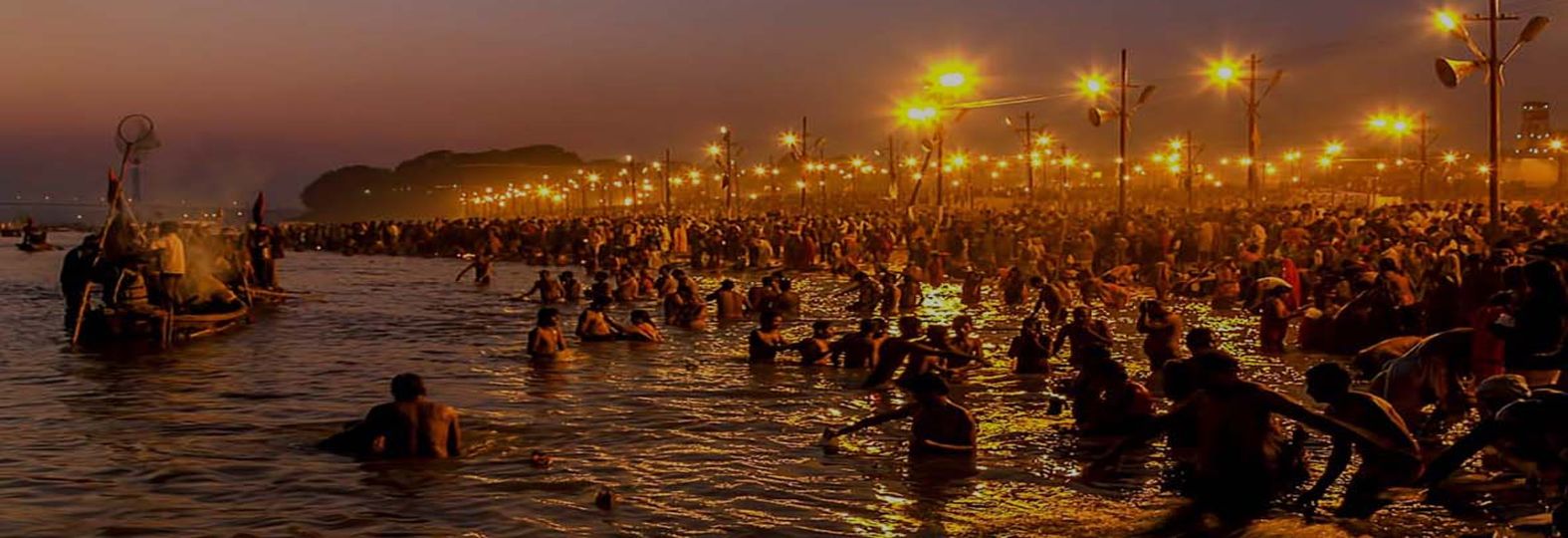
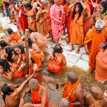




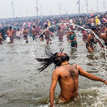

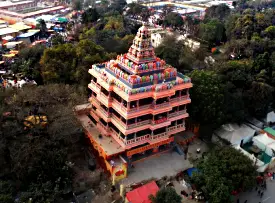
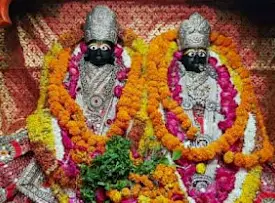
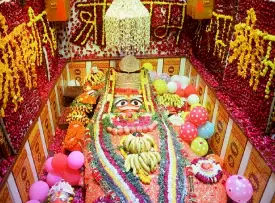

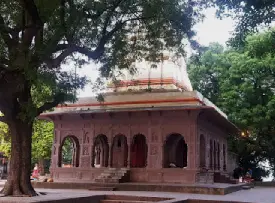
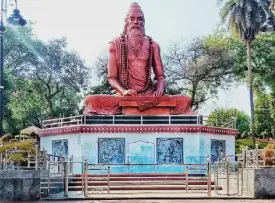
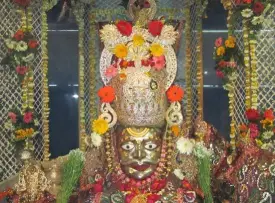
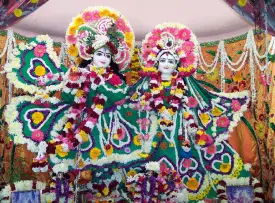
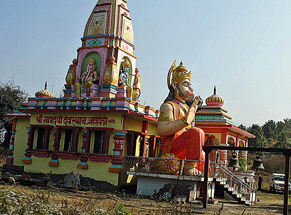

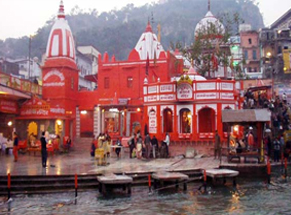
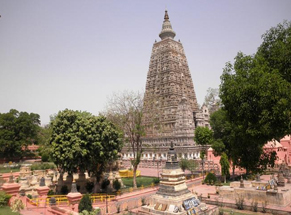

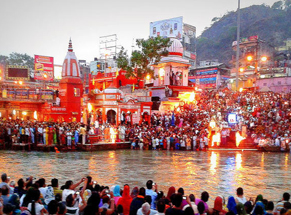
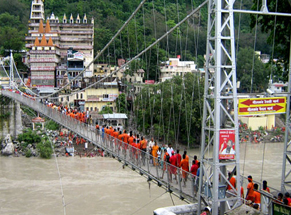
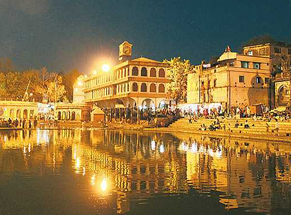
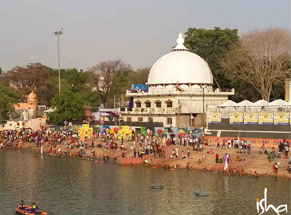
 Share
Share Home
Home Packages
Packages Book Now
Book Now